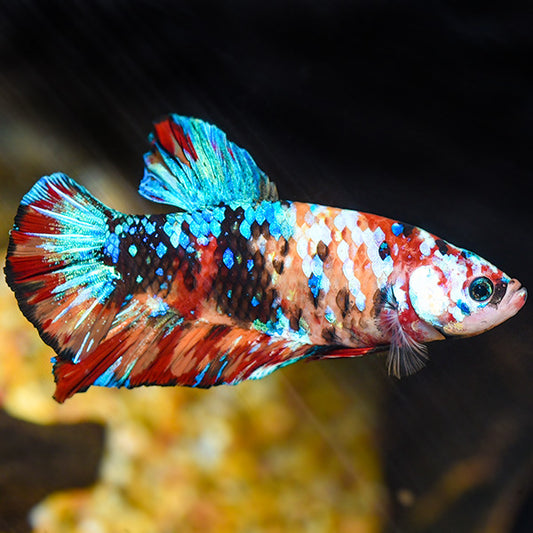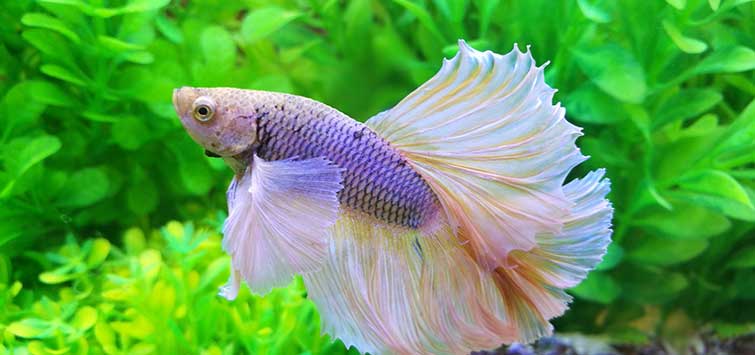Exactly how to Develop the Perfect Betta Fish Habitat in your home
Exactly how to Develop the Perfect Betta Fish Habitat in your home
Blog Article
Just How to Breed Betta Fish Efficiently: Professional Methods and Insights for Hobbyists Aiming To Expand Their Betta Collection
Breeding Betta fish calls for a nuanced understanding of genetics and environmental problems, making it important for hobbyists to approach the process with both persistance and care. Creating an optimal breeding setting, selecting the appropriate sets, and observing the details of their courtship habits are fundamental actions that can significantly impact the result.
Recognizing Betta Fish Genetics
Understanding the genetics of Betta fish is essential for successful breeding, as it influences characteristics such as shade, fin shape, and behavior. Betta fish display a diverse variety of shades and patterns, greatly identified by their genetic makeup.
Along with coloration, fin morphology is an additional substantial element of Betta genes (betta fish). The sizes and shape of fins are influenced by numerous genetics, including those that establish whether the fins are short, long, or veil-shaped. Comprehending these genetic variants assists dog breeders forecast the phenotypic outcomes of their children
Moreover, behavior traits such as aggression and territoriality can additionally be influenced by genes. These actions play a vital duty in the reproducing process, as they can impact generating success and the overall temperament of the resulting fry. By thoroughly understanding these hereditary concepts, breeders can make enlightened choices, eventually improving their breeding programs and accomplishing preferable results.
Preparing the Breeding Atmosphere
Creating an ideal reproduction environment is crucial for the effective recreation of Betta fish. The initial step in preparing this atmosphere is to pick a suitable reproduction tank, preferably ranging from 5 to 10 gallons. This dimension enables enough swimming room and the establishment of areas. The tank needs to be geared up with a heating unit to preserve a steady temperature level in between 78 ° F and 80 ° F, which is critical for motivating generating habits.
Next, take into consideration using a sponge filter or an air rock to supply gentle water circulation without producing solid currents that can stress the fish. It is necessary to mount plants or breeding cones to offer concealing spots and advertise comfort for the woman throughout the spawning procedure. Floating plants, such as Java moss or water sprite, can also create a much more all-natural setting while helping with bubble nest building by the man.
Before introducing the breeding pairs, ensure the water is conditioned and devoid of unsafe chemicals, such as chlorine or hefty steels. betta fish. Normal water changes need to be carried out to keep optimal water top quality, boosting the opportunities of effective reproduction. With these preparations in area, the reproducing environment will certainly support the health and wellness and well-being of both Betta fish
Choosing Reproduction Pairs
Choosing the ideal breeding pairs is crucial for accomplishing successful Betta fish reproduction. Healthy Betta fish exhibit lively colors, clear eyes, and active habits.
Personality is an additional important consideration, as Betta fish are understood for their aggressive nature. It is suggested to pick a male and woman that show compatible personalities to lessen stress throughout the breeding procedure. A calm male can urge a smoother courtship, while a lady that is as well aggressive might interfere with the process.
Hereditary background try this out also plays a considerable function in the quality of the spawn. Reproducing fish that are genetically varied can decrease the risk of genetic health and wellness concerns and enhance the total vigor of the fry. It is valuable to research the lineage of both the man and lady, concentrating on preferable characteristics such as fin kind, shade patterns, and size.
The Reproduction Refine
The breeding process of Betta fish requires cautious planning and focus to information to guarantee an effective outcome. It is vital to prepare a suitable breeding storage tank, preferably a 5-10 gallon aquarium with a temperature kept at 78-80 ° F. The storage tank should be outfitted with a heating system, filter (preferably sponge kind to avoid solid currents), and lots of marine plants for the woman to conceal.
When the setting is set, present the picked breeding pair to the storage tank, enabling them to accommodate. Observe their behavior; the man will show sophisticated courtship rituals, including flaring his fins and constructing a bubble nest. If the female shows interest, she will show upright stripes indicating preparedness for spawning.
When the important source lady is responsive, both will participate in a breeding embrace, during which the male fertilizes the eggs. It is important to monitor their communications closely, as the man might come to be hostile. After spawning, remove the woman to stop prospective damage. The male will have a tendency to the eggs, which normally hatch out within 24-36 hours. Preserving ideal water conditions during this duration is necessary for the growth of healthy Betta fry.
Caring for Betta Fry

Feeding Betta fry is important, as they need a diet plan high in protein. They can check over here be fed infusoria or liquid fry food, transitioning to finely crushed top notch pellets as they expand. Feed tiny sections multiple times a day to motivate healthy and balanced growth without straining the storage tank with uneaten food.

As they grow, monitor their growth closely and divide any aggressive individuals to avoid injury. By giving a supporting setting and appropriate nourishment, hobbyists can effectively increase Betta fry into dynamic, healthy and balanced fish, eventually improving their reproduction undertakings.
Conclusion
Successful Betta fish breeding needs meticulous interest to hereditary option, environmental problems, and treatment for the fry. By recognizing the genes of Betta fish and preparing a suitable breeding atmosphere, hobbyists can boost the opportunities of creating dynamic, healthy and balanced children.
Report this page